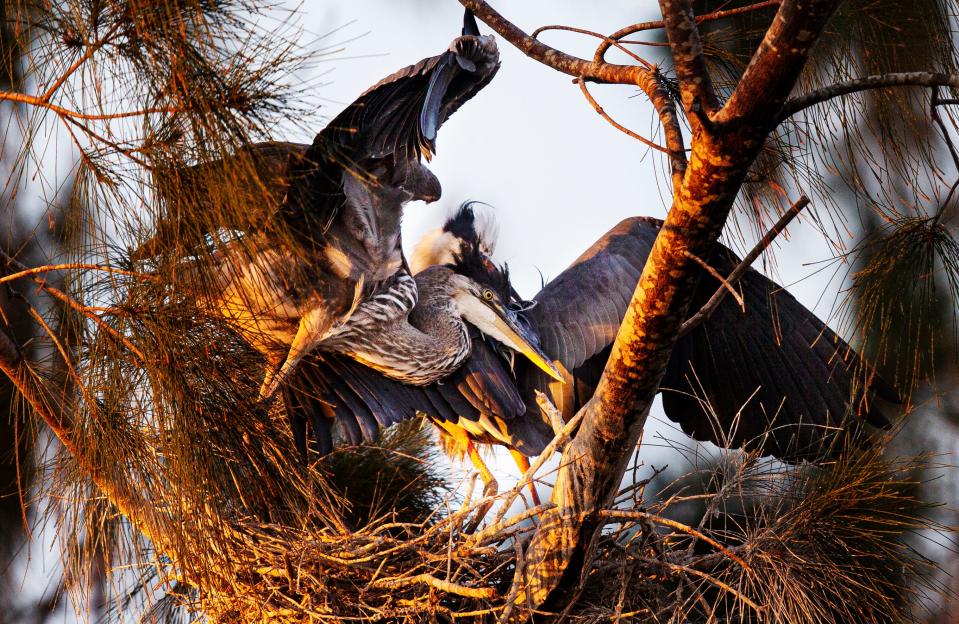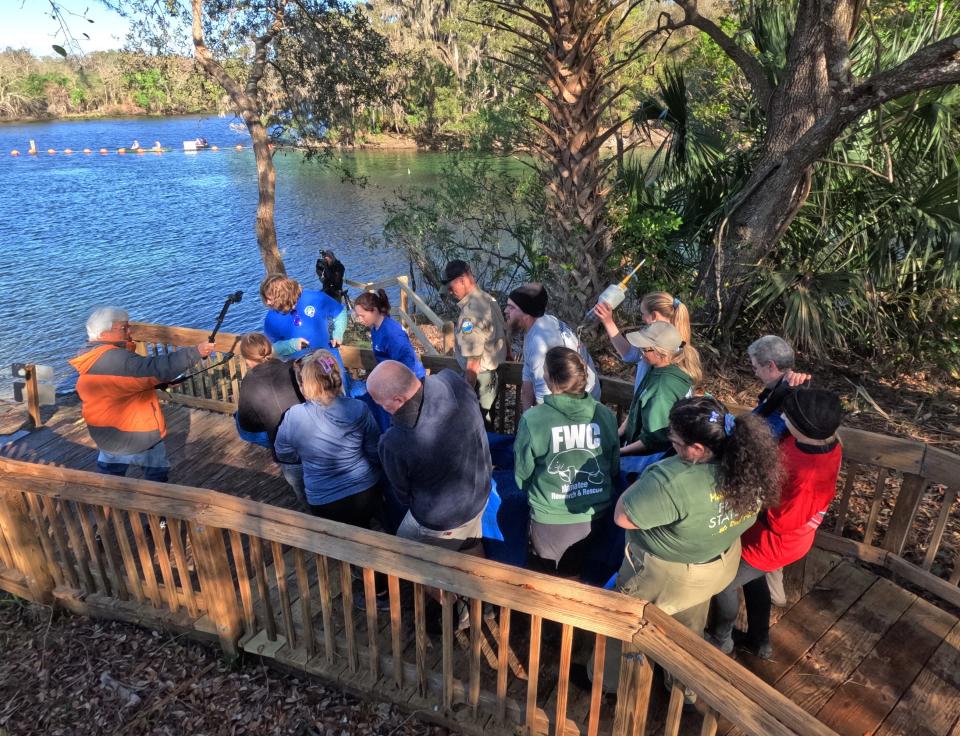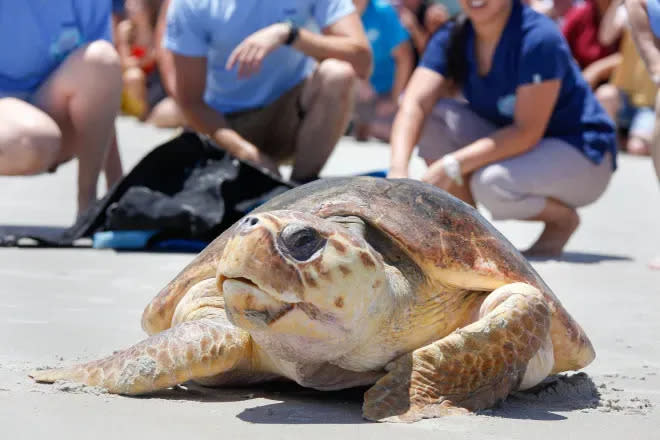Look out for these animals as spring brings renewal of activity from Florida wildlife
Spring is here, which means the weather is warming up and so is Florida's wildlife.
Coyote sightings are on the rise and alligators are showing up at people's front doors, at least that was the case for one Daytona Beach resident this month.
"Several species of wildlife become more active for migration, breeding, feeding and nesting," Lisa Thompson with the Florida Fish and Wildlife Conservation Commission said in a news release. "This increased level of wildlife activity means that people could be more likely to encounter wildlife and should take precautions to avoid disrupting these natural behaviors and prevent conflicts with wildlife."
Here are animals Florida residents and visitors should expect to see more of soon, whether by land, by water or by air:
What birds are active during spring in Florida?

Whether they're migrating to the Sunshine State from other parts of the globe, beginning to nest or beginning to breed, spring is a busy season for birds of all kinds.
Coastal residents and beachgoers should watch for shallow shorebird and seabird nests.
Nesting season:What are the 5 most spotted winter shorebirds and seabirds in Florida?
There are pros and cons to the well-camouflaged nature of their nests, which are made from sand and seashells: Predators have a harder time seeing them, but so do people, which means these shallow nests are more vulnerable to being stepped on or disturbed and then exposed.
People should keep their distance from these birds, including wading birds that are nesting on tree islands and in mangroves.
People also should give space to breeding birds, such as wild turkeys, quail and great-crested flycatchers.
Bats, bears and manatees on the move

In addition to more coyote sightings, residents and visitors may see more activity from bats and bears.
Bat maternity season officially runs April 15 through Aug. 15, and it's illegal to block bats from their roosts as a flightless baby bat could become trapped and unable to survive.
Homeowners should check houses and structures for any entry points and make any necessary repairs after ensuring no bats are present. The FWC recommends installing an exclusion device when there are no bats around as it allows bats to exit but not return to roost.
Bears become more active during the spring as this is when females teach their cubs what to eat and how to survive.
In an effort to avoid drawing bears into a potential conflict, people should secure their garbage cans and store food indoors, whether it's for pets or birdseed.
Florida's black bears:How to keep you and your pets safe
What to do when you see one:Coyotes looking for love pose a danger to your pets
Manatees about this time begin leaving the springs and other winter habitats and heading for rivers, canals and near-shore waters.
Boaters and users of other watercraft should watch for manatees and be mindful of their presence by abiding by the posted speed limits and seasonal zones that reflect manatee migration patterns, according to the FWC.
Reptiles return
Alligator courtship begins in early April and is followed by mating season, typically May through June.
Encounters during which an alligator bites a person typically happen in or near water to someone who isn't paying attention to their surroundings and not upon opening one's front door, such as what happened to Scot Hollingsworth.
Alligator encounters:Where they lurk in Florida and what to do if you are attacked
Call the FWC’s Nuisance Alligator Hotline toll‐free at 1‐866‐392‐4286 to report an alligator.
Just as with alligators, snakes, which may be more active as the weather warms, should be given space and left alone.
Gopher tortoises, whose burrows leave a half-moon-shaped hole behind, also become more active in the spring as they look for food and a mate.
If a gopher tortoise could use some help crossing the road and it's safe to do so, the FWC recommends moving it to a safer location pointed in the direction it was heading, never putting it in water.

Later in spring is when sea turtle nesting begins.
Beachgoers should leave no trace of their visit so as to not harm the sea turtles or disrupt the nesting process.
This article originally appeared on The Daytona Beach News-Journal: Look out for the wildlife, it's that time of year

